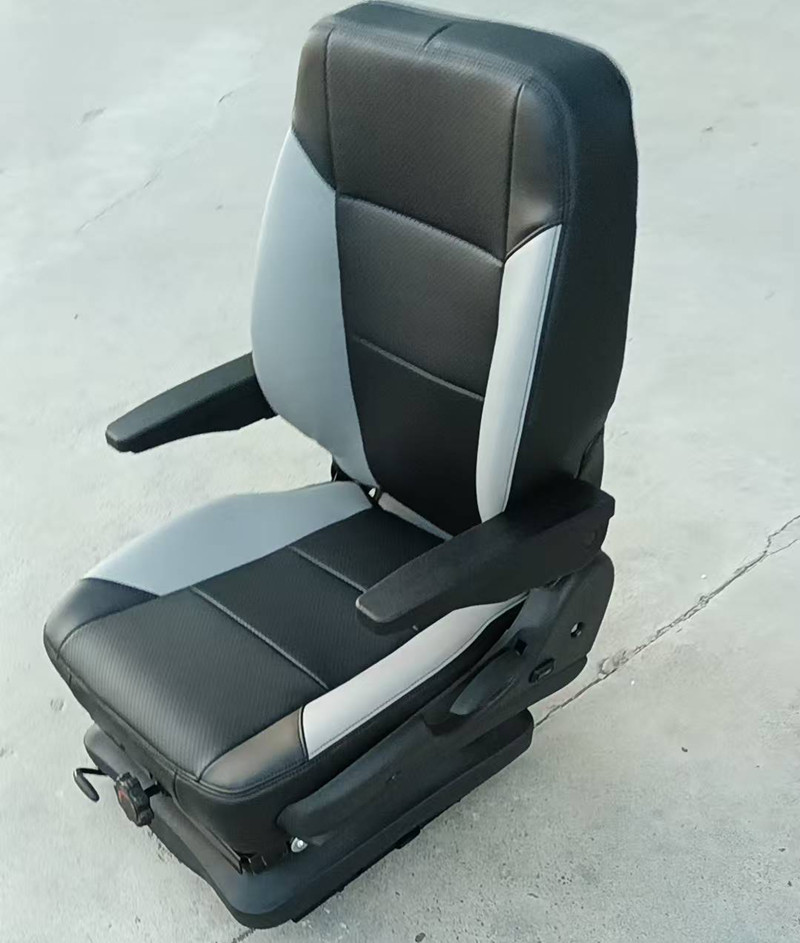Which Is More Important for Bus Seats Comfort or Safety
Which Is More Important for bus seats: Comfort or Safety?
When choosing bus seats, safety is an uncompromising core prerequisite, while comfort is a key supplement to enhance the experience—the two are not opposing, but follow a dependent logic of "safety as the foundation and comfort as the wing". However, in terms of priority, it must be clear: safety is the bottom line, and comfort is the "icing on the cake".
I. Core Conclusion: Safety Is the "1", Comfort Is the Subsequent "0s"
1. The Irreplaceability of Safety
As a public transportation tool (or long-distance transport vehicle), a bus carries the lives and safety of dozens of passengers. The safety performance of seats is directly related to the degree of injury in emergency scenarios such as collisions and sudden brakes. Whether it is the mandatory requirements like the GB 13057-2023 collision standard, high-strength steel frames, and 3-point seat belts, or anti-displacement designs and impact-resistant structures, all serve as the last line of defense to ensure passengers "avoid injury or minimize injury". A seat lacking safety guarantees is meaningless no matter how high its comfort level is (for example: a seat that can recline flat but has a broken frame after a collision is essentially a "fatal hazard").
2. The Subordinate Position of Comfort
The core value of comfort lies in improving the passenger experience (reducing long-distance fatigue and increasing satisfaction) and enhancing operational competitiveness (such as the differentiated advantages of tour buses and business reception vehicles). However, it must be built on the basis of "meeting safety standards". Sacrificing safety for the sake of comfort (e.g., over-simplifying the frame structure to reduce weight, or lowering seat hardness to improve softness while weakening support) is equivalent to "putting the cart before the horse".
II. The Dialectical Relationship Between the Two: Safety Is the Premise of Comfort, and Comfort Can Assist Safety
1. Comfort Is Meaningless If Safety Fails to Meet Standards
- Case: To cut costs, a short-distance commuter bus adopted low-quality seats that did not comply with GB standards (with frames made of ordinary steel and loose seat belt anchor points). Although the seat fabric was soft and the spacing was spacious, 3 passengers were injured due to seat displacement and seat belt failure during a sudden brake. In this case, "comfort" instead made passengers lower their vigilance against risks and aggravated the injury.
- Industry Consensus: The R&D logic of all formal seat manufacturers is "first meet safety standards, then optimize comfort configurations". Safety certifications (3C, ISO, collision tests) are mandatory thresholds for entering the market. Seats without safety guarantees are illegal products and prohibited from circulation.
2. Reasonable Comfort Design Can Indirectly Improve Safety Factors
- Ergonomic Comfort Design ≠ Sacrificing Safety: Ergonomic designs such as backrest angles (100°-110°), seat depth (380-420mm), and headrest support not only reduce long-distance fatigue but also help passengers maintain a stable sitting posture during travel. This avoids body imbalance during sudden brakes caused by distorted sitting postures, or inattention due to fatigue (especially for passengers near the driver).
- Dual Value of the Cushioning System: High-density polyurethane foam (≥35kg/m³) not only ensures comfortable resilience but also absorbs impact force through foam compression during collisions, reducing direct impact on the human body (foam with excessively low hardness is soft but has poor cushioning effect; excessively high hardness is neither comfortable nor impact-resistant. The "dual-hardness design" of high-quality seats is precisely a balance between safety and comfort).
3. Priority Verification in Extreme Scenarios
- Long-Distance Tour Buses: Even if passengers have high demands for comfort (such as adjustable backrests and leg rests), seats must pass the 50km/h collision test and have seat belts with a tensile strength of ≥14,700N. If a seat has comprehensive comfort functions but fails to meet safety standards, it must be firmly excluded.
- School Buses/Public Buses: Safety standards are more stringent (e.g., the GB 24406 school bus standard). Comfort designs must serve safety (such as high backrests to protect the head, and flame-retardant, easy-to-clean fabrics). It is not allowed to reduce safety redundancy for the sake of "comfortable seating".
III. Balanced Strategies in Actual Procurement (Combined with the Scenario of Auto Parts Export Business)
1. Step 1: Firmly Hold the Safety Bottom Line
When procuring, prioritize verifying safety qualifications: whether the product complies with the mandatory standards of the target market (such as China’s GB 13057-2023, the EU’s ECE R14, the US’s FMVSS 207, etc.), whether there are third-party collision test reports, and whether the frame material and seat belt strength parameters meet standards. For exported products, it is necessary to ensure that safety certifications match the target country’s regulations (e.g., seats exported to Europe must pass ECE certification) to avoid customs clearance obstacles or after-sales risks caused by unqualified safety.
2. Step 2: Match Comfort Needs on the Basis of Meeting Safety Standards
- Long-Distance Export Models (e.g., tour buses exported to Southeast Asia, Europe, and the US): Focus on optimizing comfort configurations (adjustable headrests, USB charging ports, perforated PU leather/microfiber leather materials) to enhance product competitiveness and meet the high demands of overseas markets for long-distance travel experiences.
- Short-Distance Commuter/Public Transport Export Models (e.g., city buses exported to Africa and South America): Prioritize "basic and practical" comfort configurations (wear-resistant, easy-to-clean fabrics, fixed armrests). There is no need for excessive functional accumulation; instead, control costs while ensuring the core safety.
- Business Reception Export Models (e.g., high-end buses exported to the Middle East and Europe): On the basis of top-tier safety configurations (such as reinforced frames and reserved side airbag interfaces), upgrade luxury comfort functions (genuine leather seats, massage/heating/ventilation functions) to match the needs of high-end markets.
3. Step 3: Reject the "Either-Or" Trade-Off
The design logic of high-quality seats is "compatibility between safety and comfort": for example, high-strength steel frames and ergonomic backrests can be realized simultaneously; high-density foam ensures both cushioning safety and improved sitting comfort; 3-point seat belts and adjustable armrests do not conflict with each other. During procurement, avoid low-quality products that "sacrifice safety for low prices" or "simplify safety structures for comfort". Instead, choose formal suppliers that can achieve a balance between the two (such as brands like Yutong, Adient, and King Long, whose products have passed safety certifications in multiple regions and have mature comfort configurations).
IV. Summary
- Priority Ranking: Safety > Comfort (Safety is the premise; without safety, nothing else matters. Comfort is an enhancement that needs to be optimized on the basis of meeting safety standards).
- Practical Logic: "Meeting safety standards is the access threshold, and comfort configurations are the differentiated competitiveness"—for the auto parts export business, safety compliance is the foundation for products to enter overseas markets (avoiding regulatory risks), while comfort designs that fit the target market’s needs (e.g., emphasizing breathability in tropical regions and adding heating functions in cold regions) are the key to improving customer satisfaction and expanding orders.
- Core Principle: Never compromise by "trading safety for comfort"; instead, choose products that "balance safety and comfort". This is not only responsible for passengers but also the core guarantee for enterprises to achieve long-term stable operations (especially building brand reputation in the export business).
Contact information:
Cangzhou Huayang Car Accessory Co.,Ltd.
WhatsApp/WeChat/Kakao talk/MB:+86 15030709203
Tel: +86 15030709203; +86 18733045230
QQ: 2761741790
Email: sales@hycaraccessory.com
ceo@hycaraccessory.com
sales@yiduspace.com
2761741790@qq.com
Website: www.hycaraccessory.com



